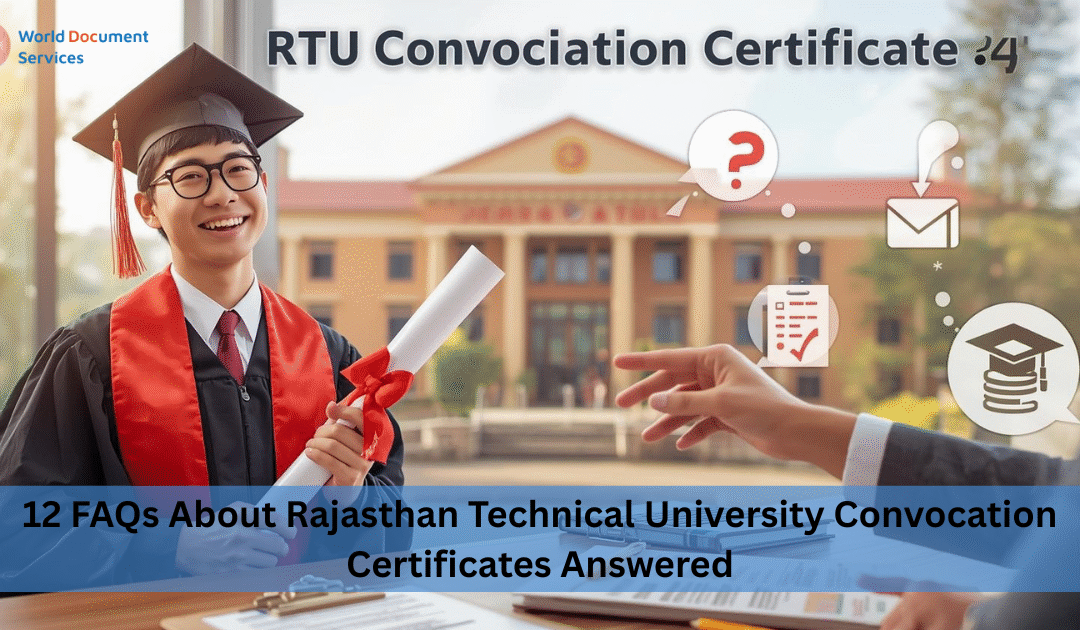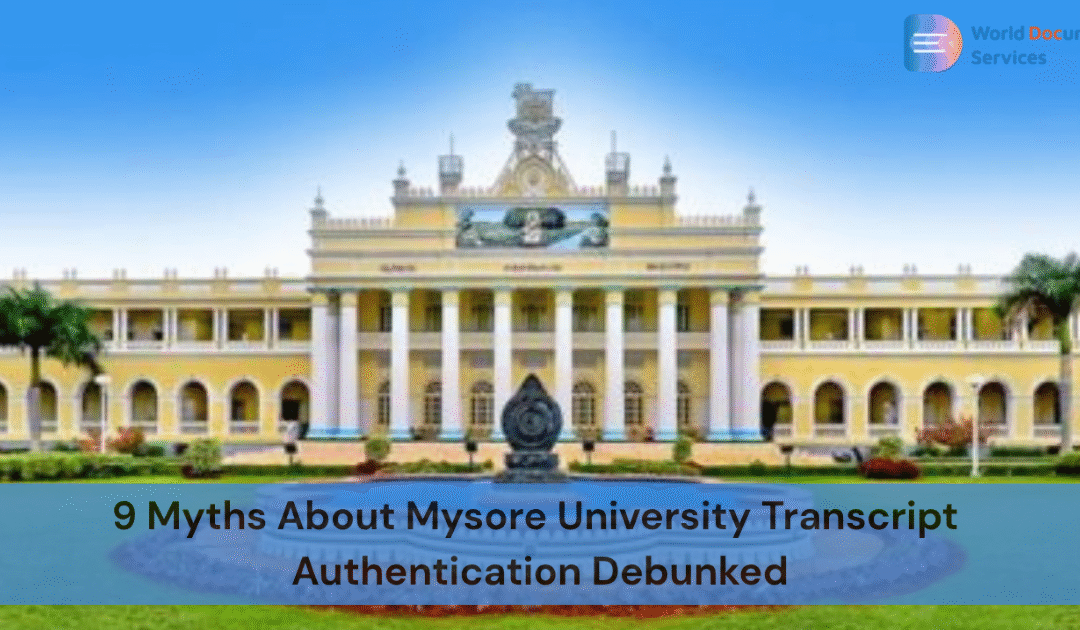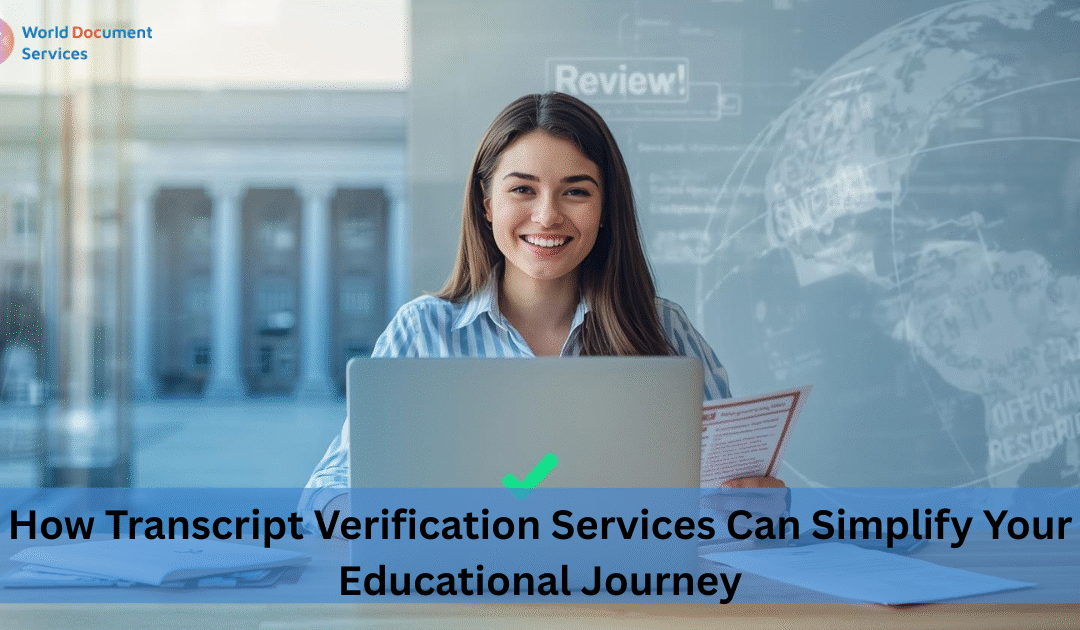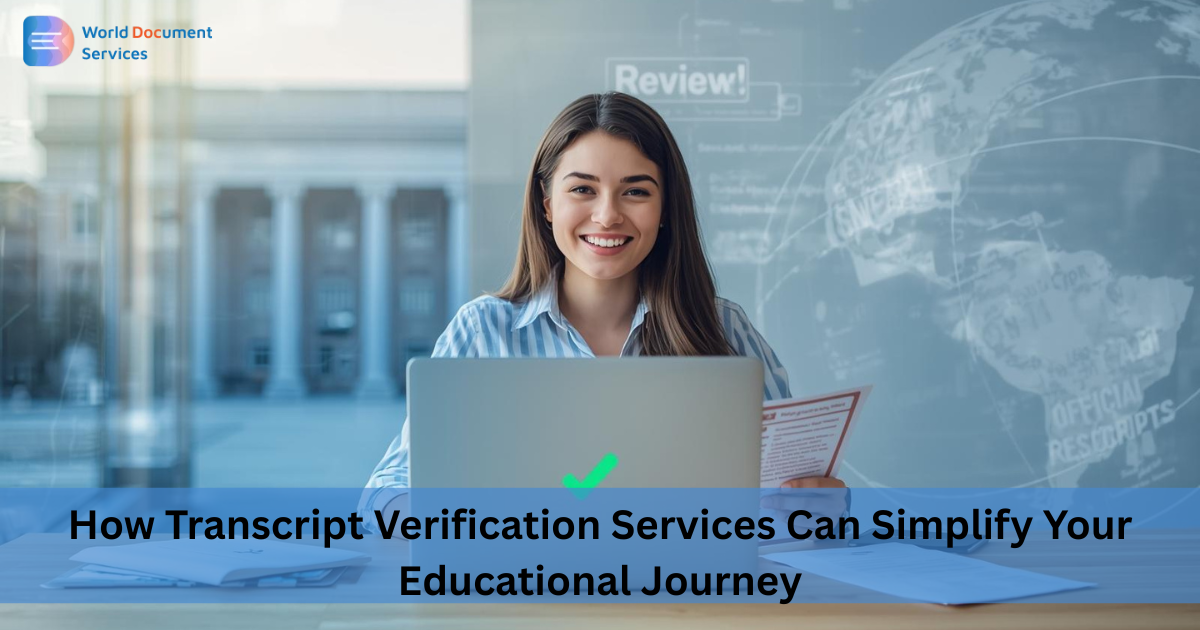
by World Document Services | Sep 8, 2025 | Transcripts from University

Obtaining convocation certificates is a milestone in your educational journey. Today, we are clarifying the doubts related to obtaining the convocation certificate from the Rajasthan Technical University. Here are the 12 most-asked questions from the university and clients.
Need help with your RTU Convocation Certificate? Contact Us Now!
1. What is a convocation certificate?
A convocation certificate is basically your degree certificate, which is an official document issued by the university that confirms you have successfully completed the educational program you enrolled for, whether it be your undergraduate, postgraduate, or PhD.
2. Who is eligible to apply for a convocation certificate?
The eligibility criteria for a convocation certificate are simply to complete the educational course you are enrolled in, whether it be undergraduate, postgraduate, or PhD. Any individual who has completed the course without a backlog or failed is eligible for a convocation certificate.
3. How can I apply for an RTU convocation certificate?
You can apply for your convocation certificate just by logging in to your RTU portal, registering for the same, and filling out the application form, which will complete the process. Upload necessary documents (like marksheets, your Aadhaar card details, enrollment number, etc.). Pay the necessary fees, and it’s done. To simplify it even more, you can apply through the World Document Services.
4. What documents are required for the application?
For the RTU application, you need the following documents:
- Copy of your final year marksheet.
- Copy of your provisional certificate (if needed)
- Aadhar Card or another valid ID proof.
- Passport-size photographs.
5. Are there any fees for obtaining the convocation certificate?
Yes, RTU charges fees for issuing the convocation certificate depending on the mode of application. The charges are according to the mode of application, whether it is online or offline. It also depends on whether you are applying before convocation or after.
6. How long does it take to receive the convocation certificate?
The time required to receive your convocation certificate may vary between 4 and 6 weeks after submission of your application.
7. What should I do if I have missed the convocation ceremony?
Attending convocation or not, you can apply for your convocation certificate regardless. Applying for your convocation certificate just requires you to log in to your RTU portal. The university allows all undergraduates, postgraduates, and PhD holders to apply for their convocation certificate even after the convocation ceremony.
8. Can I apply for a duplicate convocation certificate?
Yes, you can apply for a duplicate convocation certificate if you have lost or damaged the original Rajasthan Technical University convocation certificate. You will need to submit an affidavit stating the reason for the application, along with a copy of the police report (applicable in some cases) and applicable fees.
9. How can I track the status of the application?
You can track your application by logging in to your RTU online portal before dispatch. You may receive the status either by text or mail, whichever is the selected mode of communication. Post dispatch, you might need to contact the post service provider to track the application further.
10. What should I do if I receive an error in my convocation certificate?
If there are any errors (such as spelling of your name or anything), you must immediately contact the RTU examination department. You may have to submit an application stating the correction along with the supporting documents.
11. Is a convocation certificate the same as a provisional certificate?
No, a convocation certificate and a provisional certificate are two different documents. The provisional certificate is a temporary document issued by the university before the official convocation ceremony, confirming that you have completed your degree. The convocation is the final official document.
12. Can I use my convocation certificate for international purposes?
Yes, a convocation certificate issued by RTU is widely recognized and can be used for applying for higher education or job opportunities abroad. However, you may need to get it apostilled or attested as per the requirements of the country.
It’s important to know the steps to get your graduation certificate from Rajasthan Technical University to make sure you can easily get this document when you need it for things like continuing your studies, job applications, or even for immigration purposes. You should follow the instructions for applying, and don’t be afraid to ask the university staff for help if you need it.
If you have any inquiries or require help with obtaining documents, please feel free to reach out to us for assistance.
Conclusion
Having your documents handy is essential, whether it be your transcript from Rajasthan Technical University or your MOI from the same. Whether you are planning to study abroad or pursue your professional journey abroad, by understanding the process and following the guidelines, you can ensure a smooth experience.
Remember, if you are facing any challenge regarding obtaining your documents from Singhnia University, reach out to World Document Services for smooth and hassle-free procurement of your educational documents, and professional help always makes your journey better.
Download the World Document Services App
You may enjoy a hassle-free experience by downloading our mobile app from either the App Store or the Play Store. It works with both iOS and Android devices.
More related FAQ’s:
Q: What should I do if there’s a mistake in my convocation certificate?
A: Contacting the university will be a smart move. Submit your correction application to the RTU examination department, along with proof of correction, a copy of your ID proof, and application fees.
Q: Can I change my delivery address after submission of the application?
A: Yes, you can change the delivery address before the dispatch of the document. Log in to your RTU portal and change the address. But if it is already dispatched, you might need to contact the postal services.
Q: Is there any way to expedite the application process?
A: Generally, RTU follows a standard timeline for all applications. Hence, there is no expedited service; it may not be available. But one can always reach out to the university’s examination department for further information.

by World Document Services | Sep 8, 2025 | Transcripts from University

For Mysore University transcript authentication, myths dominate, particularly for those who are required to use their academic credentials for further studies, employment, or immigration abroad. It is essential to be aware of the truth behind the myths in order to have a smooth and successful Mysore University transcript process.
Here in this article, we will knock down all the popular myths about transcript authentication from Mysore University and pave the way for how World Document Services can make it all easy.
Need help with your Mysore University transcript? Contact Us Now!
Myth 1: You Can Send Unauthenticated Transcripts for ECA
Fact: The most fatal myth is that unauthenticated transcripts are valid for Educational Credential Assessment (ECA). ECA services such as WES, ICAS, and IQAS will not approve anything less than authenticated transcripts obtained directly from the institution or an authorized service provider such as World Document Services. Your application is delayed or rejected without authentication.
Myth 2: The Process Is Too Complicated to Handle
Fact: Getting the Mysore University transcript process done may appear to be a challenging task, but it’s not as difficult as everyone makes it sound. World Document Services enables you to simplify the process from document gathering to direct submission. Their professionals ensure your transcripts are verified, authenticated, and submitted to the relevant ECA officials without any hassle.
Myth 3: Only Physical Submissions Are Accepted
Fact: These days, it is very common for several universities and ECA organizations to take online applications. World Document Services provides a secure online transcript service for Mysore University for hassle-free submissions without any on-campus visits.
Myth 4: It Takes Forever to Authenticate Transcripts
Fact: Because most universities and ECA bodies have the capability of accepting online submissions at this time of technology, it is better to employ an online transcript service from World Document Services for an easy, secure, and speedy method of submission without having to physically travel to the institutions.
The time taken for authentication varies based on several factors, such as the university’s processing capacity and the required service provider. For World Document Services, this is streamlined with direct liaising with Mysore University and thus eliminates extraneous delays.
Myth 5: Anyone Can Submit Transcripts on Your Behalf
Fact: Transcript verification is an official process that must be conducted either directly by the university or with the help of an approved service provider. Third-party individuals or unauthorized agents are not permitted to send documents on your behalf. World Document Services is a reputable provider that verifies your transcripts and sends them securely.
Myth 6: ECA Authorities Accept Photocopies of Transcripts
Fact: ECA agencies need original, certified transcripts sent in sealed envelopes directly from the university or a recognized agency. Unsigned copies and photocopies will be returned. World Document Services ensures your transcripts are verified and mailed securely to ECA agencies such as WES, ICAS, or IQAS.
Myth 7: All ECA Agencies Have the Same Requirements
Fact: All ECA organizations have varying academic transcript authentication requirements. Some will only accept online submissions, while others require that sealed envelopes be mailed in through the university. World Document Services guarantees your transcripts are submitted and processed according to each ECA organization’s unique procedures.
Myth 8: It’s Not Necessary to Track Transcript Submissions
Fact: Keeping track of your transcript submission is important to prevent delays or mistakes in the ECA process. With World Document Services, you can monitor the status of your transcript in real-time using their easy-to-use mobile application, which makes it convenient.
Myth 9: DIY Submission Is Always Cheaper and Better
Fact: Doing the Mysore University document authentication yourself may appear to be budget-friendly, but it turns out to be time-consuming, error-prone, and frustrating. Misleading submissions lead to rejections or expensive delays. With World Document Services, you can be confident that your Mysore University transcripts are professionally processed correctly and in a timely fashion.
How World Document Services Makes Mysore University Transcript Authentication Easy
1. Complete Document Handling
From retrieving your educational records to preparing them for authentication, World Document Services takes care of each step of the process professionally and in an efficient manner.
2. Direct Submission to ECA Bodies
Your authenticated transcripts are directly submitted to the concerned ECA agencies through World Document Services, which takes care of their own formalities.
3. Secure Online Process
Save yourself the inconvenience of physical submissions. With World Document Services’ online transcript solutions for Mysore University, send documents online and be assured of having a speedy and smooth experience.
4. Real-Time Tracking
Through World Document Services’ mobile app, you can track the status of your transcript authentication and receive updates in real time.
5. Fast Processing Time
Their quick systems eliminate delays, and your Mysore University transcripts are submitted to the concerned authorities on time.
Frequently Asked Questions (FAQs)
Q: Does World Document Services submit the Mysore University ECA?
A: World Document Services provides authentication and secure submission of Mysore University transcripts to ECA agencies such as WES, ICAS, and IQAS.
Q: How is the speed of authentication?
A: Processing time is not consistent, but World Document Services ensures accelerated processing for your convenience.
Q: Can I monitor the status of my submission?
A: Yes! You can monitor your application status in real-time through the World Document Services mobile app.
Q: Is online transcript submission accepted?
A: Yes, most ECA agencies accept transcripts submitted by reputable service providers such as World Document Services.
Q: How secure is the process?
A: Your documents are processed securely with encrypted systems to safeguard your academic and personal data.
Conclusion
You don’t need to go through the painful process of Mysore University transcripts. You can go ahead with your verification of the academic transcript in a smooth manner after dispelling these myths. You can get a smooth, accurate, and trustworthy verification process with the expert assistance of World Document Services.
For a smooth experience, avail yourself of the services of World Document Services now and get your transcripts certified in a smooth manner for ECA.
Let World Document Services manage transcript authentication as you pursue your academic and career aspirations!
Download the World Document Services App
You may enjoy a hassle-free experience by downloading our mobile app from either the App Store or the Play Store. It works with both iOS and Android devices.

by World Document Services | Sep 4, 2025 | Transcripts Services

Tertiary study cannot be bypassed readily around and school documents authenticating and processing are no easy tasks. Post-secondary education, work, or immigration may require proof that your school credentials were procured legally and are legitimate. Transcript verification service makes it easier to have an easy and secure way of verifying school records so as to forestall fake claims and make it easy to trace an admissions or a job procedure.
In this article, we’ll understand how educational transcript verification works, why it is important, and somewhat understand how professional services can simplify your academic journey.
Need help with your Transcript Verification Services? Contact Us Now!
What is Transcript Verification?
To understand transcript verification, let’s understand what a transcript is first. It is a document that is issued by the university, which has the details of the previous course taken by the student. Now, transcript verification services involve the authentication of academic transcripts issued by colleges, universities, and other institutions of learning. The services authenticate and guarantee that the presented academic documents are real and released by the concerned institution.
Schools, institutions, and employers checking credentials will usually request the university to check the transcript for examination and to know a person’s credentials in a more detailed way, so that they can be forwarded. Verification of transcripts is fast becoming an online procedure highly sought after as it helps students and professionals validate their credentials using the internet without any unnecessary hold-ups.
Importance of Transcript Verification Services
1. Prevents Misrepresentation and Fraud: With the growing instances of counterfeit degrees and academic certificates, authentication of academic documents guarantees individuals that they are sure their documents being offered to them are genuine. This protects institutions and organizations from fraudulent misrepresentation
2. Streamlines Admissions and Hiring Procedures: Learning institutions and employers apply credential evaluation services to make correct and timely qualification decisions. Certified transcripts allow them to make decisions instantly and escape the inconvenience of manual document verification.
3. Necessary for Immigration and Professional Certification: Authenticated academic transcripts are mostly required by most countries and professional certifying agencies for continuing with the applications. Professional transcript services ensure all is as per international standards.
4. Facilitates Foreign Employment and Study: Transcript service to cater to loopholes in most educational systems for the students ready to study abroad or specialists seeking employment abroad helps identify credentials quite easily.
5. Maintains Institutional Credibility: By processing only authentic academic documents, transcript verification by educational institutions makes employers and universities credible and upholds high professional and education standards.
How Does Online Transcript Verification Service Work?
Step 1: Document Submission
Aspirants provide their transcripts directly from an authentic university source or through a third-party document verification agency.
Step 2: Verification by Authorities
The organization makes contact with the issuing body to authenticate documents. There are also university transcript verification websites upon which authenticity may be verified directly.
Step 3: Production of Verified Report
Once academic documents have been authenticated, a report is created attesting to their validity. The report can be sent to universities, potential employers, or immigration officials.
Step 4: Stakeholder Delivery
The original transcripts are sent either via email or hard copy to the requesting organization or institution.
Choosing the Right Professional Transcript Services
Choosing a genuine service to authenticate your transcripts should be guided by the following factors:
- Ensure that the service provider is adequately familiar with the university or a collaborating university that deals with such issues.
- If under urgency, find a provider with a fast track system, operating at the times or urges.
- Make sure the provider has strict data protection protocols and discloses the data only when necessary by the university.
- Avoid costly services because these might be done at low rates by agents like World Document Services.
- They should have a customer support desk in order to have a POC during the period.
Common Issues in Transcript Verification & How to Correct Them
- A few of the universities take ages to respond, and that is something that will not be possible if you are on a deadline. Choose a professional transcript service that has institutional affiliations so that processing will be quicker.
- You should make sure that all the documents are available and being submitted in the correct way so that delays can be avoided.
- All organizations have fewer rules and norms; cross-check all formalities for the credential evaluation services.
- Some of the providers are costly and pricey. Ensure the comparison of fees prior to paying the fee to any particular transcript service providers.
- Universities require ongoing follow-ups since they are not responding timely and in time. Use professional verification services, such as World Document Services, for effective communication handling.
FAQs
Q: What is the difference between transcript verification and credential evaluation?
A: Transcript verification verifies the legitimacy of an academic document, while credential evaluation services verify the academic equivalency of foreign degrees in a foreign nation.
Q: Can I have the capacity to get my transcripts verified online?
A: Yes, the majority of online transcript verification service providers permit students and professionals to obtain their documents verified electronically without visiting the issuing institution.
Q: How long does it take to verify?
A: Institution and service provider processing times differ. Some professional transcript services offer expedited processing, typically within 1-2 weeks, while others offer in a month or more.
Q: Do transcripts need to be verified for job applications?
A: Yes, employers request academic transcripts to be verified in order to determine that the applicants possess the necessary academic qualifications to work.
Q: What if transcripts cannot be verified?
A: If verification is not possible, you may be requested to come to your institution to be reissued or bring supporting documents for verification.
Q: How much does transcript verification cost?
A: The charges vary with the institution and the provider of the service. Others require package charges for multiple document verifications.
Q: Do all universities verify transcripts?
A: Not every university has an online transcript verification system, but most of them verify on request by their registrar’s office or a licensed agency.
Q: Can I use verified transcripts for more than one application?
A: Yes, once verified, academic transcripts can be used for university admission, employment application, and immigration processes multiple times.
Conclusion
Transcript verification services assist in verifying the credibility and genuineness of academic transcripts. For higher education, hiring, or immigration, transcript verification in education saves time, prevents fraud, and makes your process convenient.
By choosing a professional transcription service that is reliable, you can ease the verification process and achieve your professional and academic goals with confidence. These services not only provide confidence but also allow institutions, employers, and immigration authorities to have faith in the qualifications being presented to them. Transcription services are trending towards an effortless and authentic learning process.
Download the World Document Services App
You may enjoy a hassle-free experience by downloading our mobile app from either the App Store or the Play Store. It works with both iOS and Android devices.

by World Document Services | Sep 4, 2025 | Most Viewed

Once applying for higher education and professional licensing, you may need to verify. When applying the language in which you complete your education. This verification is done by medium of instruction (MOI) certificates, which confirm the language. Here in this article, we have simplified the entire process in just seven simple steps to make your journey hassle-free.
Need help with your Medium of Instruction (MOI) Certificate? Contact Us Now!
The first step is to obtain the MOI Certificate from Your University:
MOI Certificate Authentication is acquiring the official document from your university. Most universities issue MOI Certificates upon request, confirming that your courses were conducted in a specific language.
To get your MOI certificate, contact your university’s administration. Submit a formal application, which will include your academic details and your identification details and degree information. Pay the required processing fees. Ensure that you request the certificate be printed on the letterhead of the university and that authorized signatures are there.
The second is to verify University Guidelines for MOI Authentication:
Before proceeding with University MOI Certificate Verification, ensure that your university’s document aligns with the verification guidelines of the institution or agency requesting it. Some universities provide the MOI certificate along with official transcripts, while others issue it separately.
To verify the document:
- Check whether the university provides an online verification code.
- Confirm if notarization or a university seal is required.
- Ensure the university signs and stamps all pages of the document.
Third Notarization of the MOI Certificate:
Many institutions and credential evaluation agencies require the MOI Certificate to be notarized for authentication. This step ensures that the document is legally recognized and prevents fraudulent submissions.
To notarize your MOI Certificate for Transcript Verification:
- Visit a certified notary public.
- Present your original MOI certificate and a valid identification document.
- Pay the notarization fee, which varies by region.
- Obtain a notary seal and signature on the document.
Fourth, get the MOI Certificate attested by the University:
Some organizations, especially those handling immigration or professional licensing, require university attestation to verify the authenticity of the MOI Certificate.
To get the attestation:
- Submit a formal request to your university’s registrar.
- Provide your original MOI certificate along with copies of your transcripts and degree certificate.
- Some universities may charge a fee for attestation services.
- Collect the attested MOI certificate with the official university seal.
Fifth is to authenticate the MOI Certificate at the government level:
If you need the MOI Certificate authentication for international use, you may have to get it authenticated by the government.
This typically involves attestation from agencies such as:
- The Ministry of Education (MOE) in your country.
- The Ministry of External Affairs (MEA) or its equivalent.
- Embassy or Consulate of the destination country.
Each country has different authentication processes, so it is essential to check the requirements beforehand.
Sixth, submit the MOI Certificate for Credential Evaluation
For study-abroad applications and job prospects, the MOI Certificate for Transcript Verification must be submitted to credential evaluation agencies like WES, ECE, or ICAS.
To ensure successful evaluation:
- Submit an officially sealed MOI certificate directly from your university to the evaluation agency.
- Check the agency’s document submission guidelines.
- Pay the required evaluation fee and wait for the processing time.
- Once evaluated, the MOI certificate will be recognized by institutions and employers.
Seventh store and Present the Authenticated MOI Certificate
Once your MOI certificate is complete, store both physical and digital copies safely. If required for future applications, having a verified and authenticated document on hand will streamline the process.
When presenting the certificate:
- Keep extra copies for submission.
- Confirm whether the recipient requires digital or hard copies.
- Check validity duration (some organizations may require a recent issue date).
How World Document Services Can Help
World Document Services simplifies this MOI certificate authentication. Their expert assistance in obtaining, verifying and authenticating makes this lengthy process easy, convenient and time-saving. An MOI certificate is needed for various purposes, like application to a university abroad or immigration requirements.
This is how we help you to get your requirement with ease:
- Obtain your MOI Certificate directly from your university with ease.
- Ensure proper attestation and notarization to meet global verification standards.
- Authenticate your certificate at the government level for international recognition.
- Submit MOI certificates for credential evaluation efficiently and without hassle.
Our team ensures that your documents are processed swiftly and securely, reducing delays and improving acceptance rates. If you need assistance with University MOI Certificate Verification, reach out to World Document Services for a seamless and stress-free experience.
FAQs on Medium of Instruction Certificate Authentication
Q: What is a Medium of Instruction Certificate (MOI Certificate)?
A: MOI is a certificate that acts as proof of language in which prior education was conducted, if applying in another country.
Q: Why is MOI Certificate Authentication important?
A: Authentication ensures that the document is legally recognized for study, work, or immigration purposes and prevents fraudulent submissions.
Q: How long does the authentication process take?
A: The time varies depending on the university, notary services, government agencies, and credential evaluation agencies. It can range from a few days to several weeks.
Q: Do all universities provide an MOI Certificate?
A: Most universities issue MOI certificates upon request, but some may require students to apply through specific channels or provide additional documentation.
Q: Can I submit a notarized copy instead of the original MOI Certificate?
A: Some institutions accept notarized copies, while others require the original document with attestation. Always check the specific requirements of the agency or university.
Q: How can I get my MOI Certificate verified internationally?
A: You may need attestation from your university, notarization, and authentication from government agencies such as the Ministry of External Affairs and the relevant embassy.
Q: Can World Document Services assist with obtaining and authenticating MOI Certificates?
A: Yes! World Document Services helps students and professionals obtain, verify, and authenticate their MOI Certificates quickly and efficiently, ensuring hassle-free processing.
Final Thoughts
Authenticating your MOI Certificate is an essential step in transcript verification, higher education applications, and professional licensing abroad. By following these seven key steps, you can ensure your MOI Certificate for Transcript Verification is legally recognized and accepted by educational institutions, immigration authorities, and employers worldwide.
For assistance with University MOI Certificate Verification and transcript-related queries, consult with an expert to navigate the process efficiently. Taking these steps in advance will save time, prevent delays, and help you achieve your academic and career goals smoothly.
Download the World Document Services App
You may enjoy a hassle-free experience by downloading our mobile app from either the App Store or the Play Store. It works with both iOS and Android devices.

by World Document Services | Sep 3, 2025 | Transcripts from University

Have you graduated from Jadavpur University and are now planning to go abroad for Studies, PR, or Work? One of the first steps that you have to take is applying for Jadavpur University transcripts and getting your certificates attested. Whether it is for WES verification, immigration purposes, or international equivalency, it sounds like a tedious process, but not anymore!
World Document Services is here to help you with ease in the entire process. In this blog, we will cover everything: how to apply for Jadavpur University transcripts, what the procedure of Certificate Attestation is, and why we are the best transcript service in India to fulfil all your requirements.
Need help with your Jadavpur University Transcripts? Contact Us Now!
Why Are Jadavpur University Transcripts Important?
Transcripts are the official academic records released by your university about your outline of your overall academic performance whether it’s about coursework or marks and grades, it covers everything.
These are mandatory for international education assessments, credential evaluation and especially for PR applications for the following countries:
- Canada (via WES – World Education Services)
- USA
- Australia
- New Zealand
- Germany
- United Kingdom
Universities and immigration authorities use these transcripts to verify your academic credentials and match them with their local education standards.
What is Certificate Attestation from Jadavpur University?
Jadavpur University certificate attestation refers to the process of verifying your degree/diploma certificate with the relevant authorities. It signifies the genuineness of your educational qualification for legal purposes, further studies, or immigration.
Certificate attestation is required for:
- Job application in Gulf countries
- Visa or PR applications
- Admission in foreign university
- Spouse or dependent visa
The process often includes HRD attestation, MEA attestation, and Embassy legalization depending on the destination country.
Who Needs Transcripts and Attestation Services?
You must apply for Jadavpur University transcripts and certificate attestation if you seek:
- WES or IQAS for immigration to Canada or the US
- Admission to foreign universities
- Foreign immigration for work, permanent residency, or higher studies
- Academic documents verification for visa or job applications
Jadavpur University Transcripts for WES & Immigration
WES (World Educational Services) is one of the most common credential evaluation agencies for Canada or USA immigration and foreign education.
For your Jadavpur University WES verification, you will need:
- Official university transcripts (WES should receive transcripts directly from the university)
- Your Degree certificate (attested if required)
Pro Tip: WES only accepts transcripts directly from the university, making the correct application process and follow-up critical.
Step-by-Step Process to Apply for Jadavpur University Transcripts Online
Getting Jadavpur University transcripts for study abroad or PR does not have to be a hassle, if you know how to do it. Here’s how it works:
1. Documents Required:
Generally you’ll require :
- Photocopy of mark sheets (all semesters)
- Photocopy of the degree certificate
- Identify proof (Aadhar/Passport)
- WES Reference Number (if any)
- Authorization letter (if applying via third-party service like us)
2. Submit Transcript Application
You can either:
- Go to the university and apply in person
- Or apply through any trusted online transcript service provider in India, like World Document Services
We ease your effort by doing all the documentation, communicating with the university on your behalf and couriering.
3. Pay the Transcript Fees
Jadavpur University needs you to pay the fees for transcripts. It may vary from time to time but primarily depends on how many sets you need.
4. University Verification & Dispatch
After document verification, the university dispatches it to WES or other organisations in a sealed signed envelope. The envelope must not be opened by anyone so that the authenticity can be verified by the recipients.
How World Document Services Can Help
We’re one of the best transcript service providers in India, and here’s how we make your journey seamless:
| Service |
What We Do |
| Transcript Application Handling |
End-to-end assistance for your Jadavpur University transcript application |
| Certificate Attestation |
HRD, MEA, Embassy & WES attestation support |
| University Coordination |
Liaison with university for quick processing |
| Secure Document Dispatch |
Safe courier to WES, IQAS, or other authorities |
| Online Tracking |
Transparent updates through every stage |
| Time Saving |
Avoid long queues, follow-ups, and delays |
| Professional Support |
Dedicated support from trained documentation experts |
Why Choose Online Transcript Services?
Submitting applications online in this digital age increases turnaround time and safety without in-person meetings or interfaces. Thus, when you apply online for a transcript, you:
- Save time and travel costs
- Have professionally trained individuals managing your application
- Get applications free of any errors
- Get instant updates and fast delivery
Using trusted sources helps avoid unnecessary rejected applications, additional application fees, and missed deadlines for universities.
Common Mistakes to Avoid While Applying
- Inaccurate or incomplete documents
- Spelling mistakes or mismatched IDs
- Sending transcripts to WES yourself (it is not allowed)
- Not aware of attestation requirements for certain countries
- Submitting your application last minute
Our Documentation experts maintain a checklist and double- and triple-check everything prior to submission to avoid mistakes.
FAQs – Jadavpur University Transcripts & Attestation
Q: Can I apply for Jadavpur University transcripts online?
A: Absolutely! You can apply from India or abroad with World Document Services.
Q: How many sets of transcripts should I apply for?
A: Usually, 1 set per university or assessing body. It’s best to apply for extra sets than not having enough later.
Q: What if I have backlogs?
A: Yes, you should apply. Just note that when applying, state your backlogs as it will show on the transcript.
Q: Can you help with WES Canada?
A: Sure! We handle Jadavpur University transcripts for WES and courier them directly to WES Canada.
Q: What if I’m not in India?
A: No worries! You can authorize us via a letter, and we’ll take care of the rest.
Final Thoughts
Applying for your Jadavpur University transcript, certificate attestation, or WES verification doesn’t have to be a tedious journey. With the right guidance and trusted hands like World Document Services, the process becomes seamless and stress-free.
Whether you’re looking to study abroad or for immigration purposes, our online transcript services will get your materials sent to the right place at the right time without any work from your end.
Ready to Apply?
Visit World Document Services and get started with your Jadavpur University transcript application today!
Download the World Document Services App
You may enjoy a hassle-free experience by downloading our mobile app from either the App Store or the Play Store. It works with both iOS and Android devices.
Page 2 of 28«12345...1020...»Last »











 Call Us
Call Us Mail Us
Mail Us WhatsApp
WhatsApp
